Carinaria japonica
Roger R. SeapyIntroduction
Carinaria japonica is a moderately large species, achieving a maximal body length of 105 mm. The shell is compressed laterally and, when viewed from the side, is triangular in shape with a height to basal length ratio of 0.8-1.0. The keel is low initially, but increases in height with proximity to the shell aperture. The tail is moderately large, with a tall dorsal crest. The geographical distribution of the species is unique among carinariids; it is limited to the cool, temperate waters of the Transition Zone in the North Pacific Ocean.
Brief Diagnosis
A species of Carinaria with:
- Maximal adult body length of 105 mm
- Viewed laterally, shell triangular in shape, with a height to basal length ratio of 0.8-1.0
- Keel increases in height toward shell aperture
- Tail moderately large, with a tall dorsal crest
Characteristics
- Body morphology
- Proboscis, trunk and tail regions well-developed
- Eye shape triangular in dorsal view
- Tail moderately large, with a tall dorsal crest (see title photograph)
- Shell morphology
- Shell triangular in lateral view; ratio of height to basal length = 0.8-1.0. Keel moderately low; keel height increases with basal growth of shell
 Click on an image to view larger version & data in a new window
Click on an image to view larger version & data in a new window Click on an image to view larger version & data in a new window
Click on an image to view larger version & data in a new windowFigure. Left: sketch of Carinaria japonica shell. Right: photograph of stalked visceral nucleus, covered by transparent shell. In the intact shell, the keel height increases with shell growth (as in the sketch on the left), but the keel is often damaged and is much lower (as in the in-situ field photograph on the right). Left © , Right © David Wrobel
- Shell triangular in lateral view; ratio of height to basal length = 0.8-1.0. Keel moderately low; keel height increases with basal growth of shell
- Larval morphology
- Larva with a colorless velum except for a dark brown pigment patch at the end of each of the six velar arms, or lobes. The body is an overall brown color, although the tentacles are transparent (Seapy and Thiriot-Quiévreux, 1994)
- Larval shell transparent and globular in shape, with an oblong aperture (see below left)
- Right side of larval shell with very small and numerous punctae, arranged in spiral rows on the shell surface. On the shell spire, the second whorl has a prominent spiral ridge, from which narrow, elevated striae radiate (see below center)
- Left side of larval shell with a deep umbilicus. Umbilicus wall has about 18 broad, elevated spiral striae (see below right)
- At metamorphosis the larval shell consists of 3-2/3 whorls; the adult shell (teleoconch) grows outward from the larval shell aperture and then downward (ventrally). The keel is produced immediately on the juvenile teleoconch
 Click on an image to view larger version & data in a new window
Click on an image to view larger version & data in a new window
Figure. Right side of shell from a juvenile Carinaria japonica. Shell length = 2.3 mm. ©
- Larva with a colorless velum except for a dark brown pigment patch at the end of each of the six velar arms, or lobes. The body is an overall brown color, although the tentacles are transparent (Seapy and Thiriot-Quiévreux, 1994)
- Radula
- The marginal teeth are strongly curved distally (see below left)
- The central, rachidian tooth is broad and in the central portion bears three elongate, pointed cusps; the middle one of which is slightly longer than the two lateral ones (see below right)
Distribution
The geographic distribution of Carinaria japonica is restricted to Transition Zone Faunal Province in the North Pacific Ocean (McGowan, 1971; Seapy, 1974). This faunal province consists of a narrow band of surface water at the Subarctic Boundary (located between the Subarctic Pacific and Central Pacific water masses at about latitude 40-41°N), extending eastward from Japanese waters and broadening as it approaches the coast of North America to extend southward as the broad California Current.


Figure. Location of the Transition Zone Faunal Province (shaded blue) in the North Pacific Ocean. The province is separated from the Central North Pacific province to the south by the Subarctic Boundary and merges more broadly with the Subarctic Pacific province to the north. © 2005
Feeding Habits
Among the species of Carinaria, the feeding habits and food preferences of C. japonica have been most thoroughly studied (Seapy, 1980). Thaliaceans (small doliolids and salps), chaetognaths and copepods dominated numerically in the diet. Comparisons of the proportion of each prey species in the diet and available in the plankton indicated preferential feeding on thaliaceans, chaetognaths and mollusks. In contrast crustaceans, and particularly copepods, were non-preferred prey. These prey preference patterns may reflect differences among prey species in their ability to escape capture.
References
McGowan, J. A. 1971. Oceanic biogeography of the Pacific, pp. 3-74. In: The micropaleontology off oceans, B. M. Funnell and W. R. Riedel (eds.). Cambridge: University Press.
Seapy, R. R. 1974. Distribution and abundance of the epipelagic mollusk Carinaria japonica in waters off southern California. Marine Biology 24:243-250.
Seapy, R. R. 1980. Predation by the epipelagic heteropod mollusk Carinaria cristata forma japonica. Marine Biology 60:137-146.
Seapy, R. R. and C. Thiriot-Quievreux. 1994. Veliger larvae of Carinariidae (Mollusca: Heteropoda) from Hawaiian waters. Veliger 37:336-343.
Thiriot-Quievreux, C. 1973. Observations de la radula des Heteropodes (Mollusca Prosobranchia) au microscope electronique a balayage et interpretation fonctionnelle. Comptes rendus de l'Acad?mie des sciences, Serie D 276: 761-764.
About This Page

California State University, Fullerton, California, USA
Correspondence regarding this page should be directed to Roger R. Seapy at
Page copyright © 2007
 Page: Tree of Life
Carinaria japonica .
Authored by
Roger R. Seapy.
The TEXT of this page is licensed under the
Creative Commons Attribution License - Version 3.0. Note that images and other media
featured on this page are each governed by their own license, and they may or may not be available
for reuse. Click on an image or a media link to access the media data window, which provides the
relevant licensing information. For the general terms and conditions of ToL material reuse and
redistribution, please see the Tree of Life Copyright
Policies.
Page: Tree of Life
Carinaria japonica .
Authored by
Roger R. Seapy.
The TEXT of this page is licensed under the
Creative Commons Attribution License - Version 3.0. Note that images and other media
featured on this page are each governed by their own license, and they may or may not be available
for reuse. Click on an image or a media link to access the media data window, which provides the
relevant licensing information. For the general terms and conditions of ToL material reuse and
redistribution, please see the Tree of Life Copyright
Policies.
- First online 10 March 2008
- Content changed 29 May 2008
Citing this page:
Seapy, Roger R. . 2008. Carinaria japonica . Version 29 May 2008. http://tolweb.org/Carinaria_japonica/28750/2008.05.29 in The Tree of Life Web Project, http://tolweb.org/





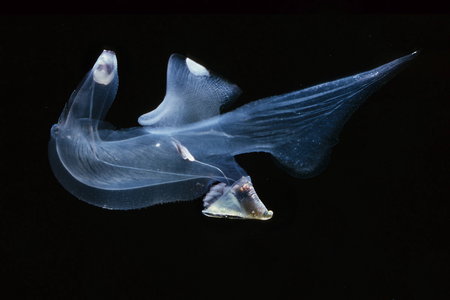
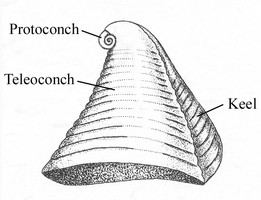
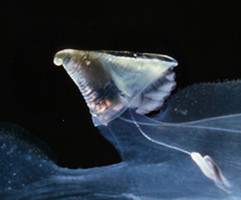


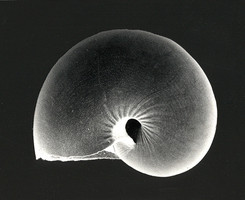
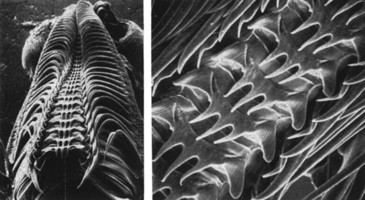



 Go to quick links
Go to quick search
Go to navigation for this section of the ToL site
Go to detailed links for the ToL site
Go to quick links
Go to quick search
Go to navigation for this section of the ToL site
Go to detailed links for the ToL site